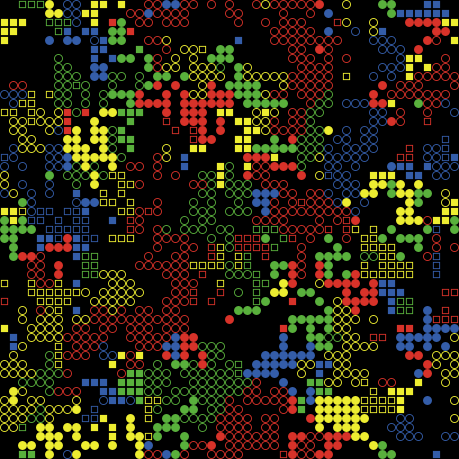
Photo credit: NetLogo ethnocentrism model(*)
(*) Wilensky, U. (2003). NetLogo Ethnocentrism model. http://ccl.northwestern.edu/netlogo/models/Ethnocentrism. Center for Connected Learning and Computer-Based Modeling, Northwestern University, Evanston, IL.
Description
Over this year we have witnessed an explosion of AI systems. It’s likely that 2023 will be remembered as the year when most AI tools became accessible to non-expert researchers, citizens, and the world population. However, certain hallucination tools may form the basis of a hallucinating culture with implications beyond formal aesthetics. All sorts of plugins allow designers to “play and obey” their inner specified rules, which can result in an increasing distance from the process’s rigor.
Despite the historical importance of these new AI accessibility, it is of fundamental importance for us as designers to understand the possibilities and paths of the processes being implemented in parallel to our possible aesthetics gamification developments.
That is precisely why, during this trimester 3, that is focused on approaches for HMC, we will be exploring the very basis of the machine self-awareness, human collaboration and built environment mapping.
We will be researching the process of collaborative robotics based on the principles of real-time awareness systems for mapping and communication.
That, that is per se the definition of a multiagent system – A series of bots, digital or physical, that being aware of the environment collaboratively, they are also aware of themselves within it and, also, about re rest of the collaborators within the bot’s population-, has not been considered with rigour within our field when proposing collaborative systems.
We will be first devoted to provoking the understanding of what collaborative ‘bots’ systems are, how they might communicate and how emergence of collaborative behaviours through collaborative environment awareness will be sometimes the fundamental aim of the system. Then we will be reviewing and researching collaborative bot systems from the 1960’s till 2023 for finally proposing a collaborative ‘bot’ proposal for a specific situation within our built environment.
Learning Objectives
The course is oriented towards the development of students’ critical thinking capacities, engaging the students in a series of debates questioning diverse approaches and possible outcomes. Students will develop a critical reflection on the proposed field related to term 3 topic (Human – Machine – Collaboration).
As so the course focuses on the development of a short investigation, both in a reflexive and applicative way, developing conclusive outputs and buildings them towards propositive and innovative visions for practice in relation to robotics and the advanced construction industry.






